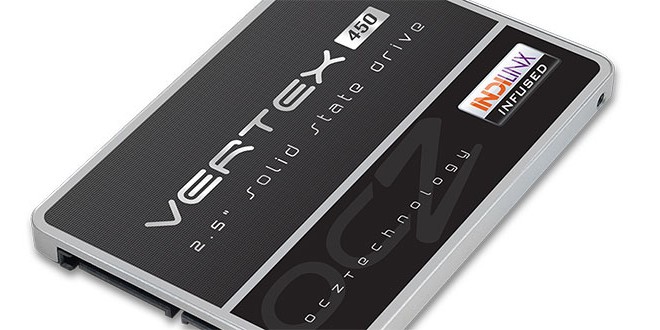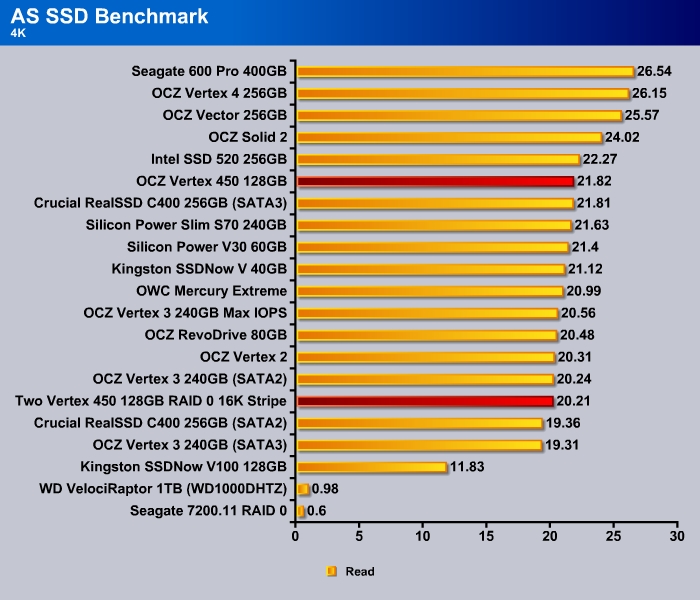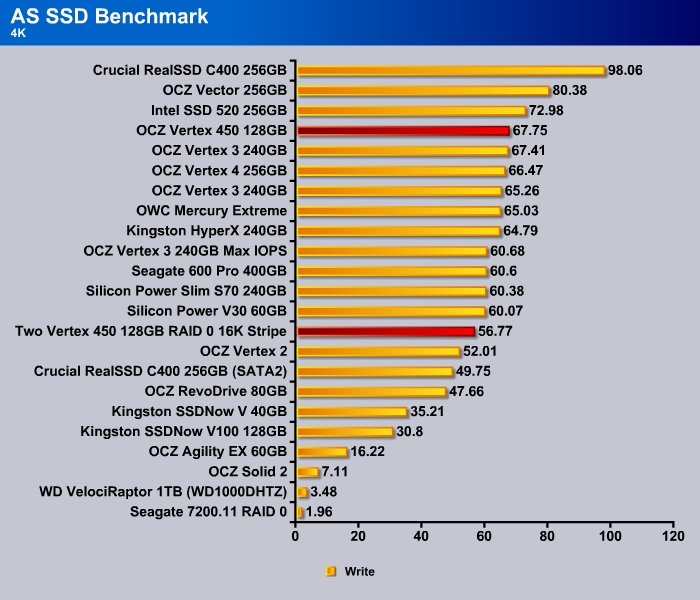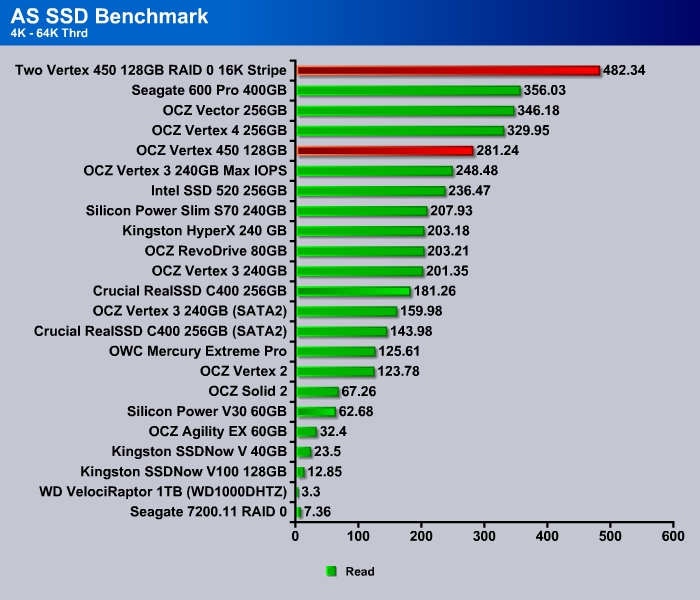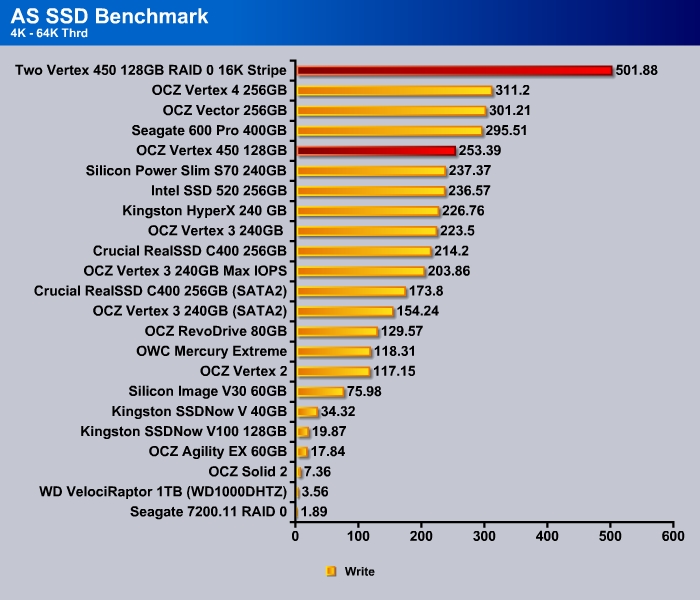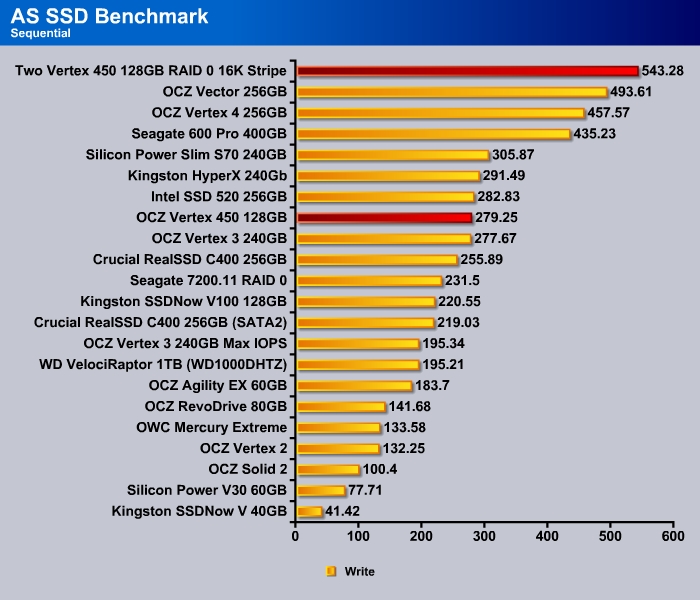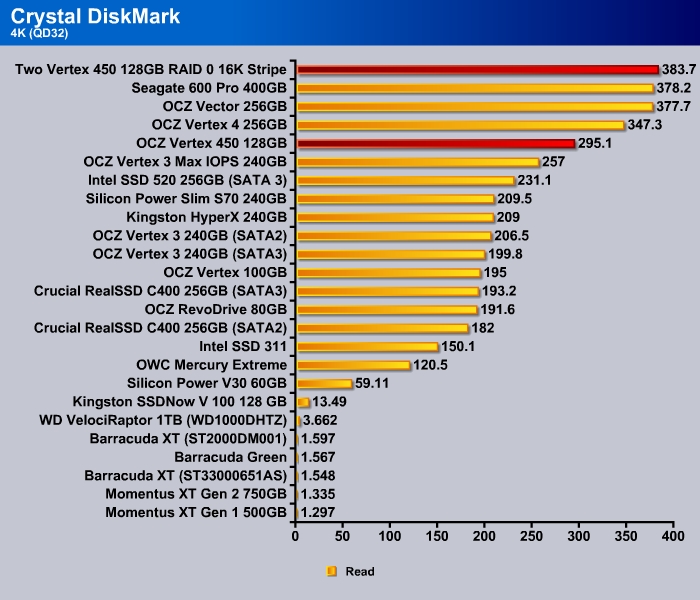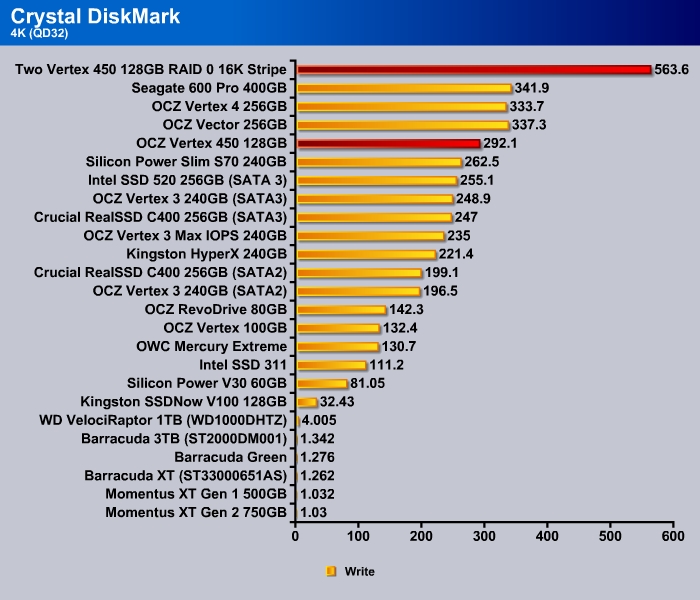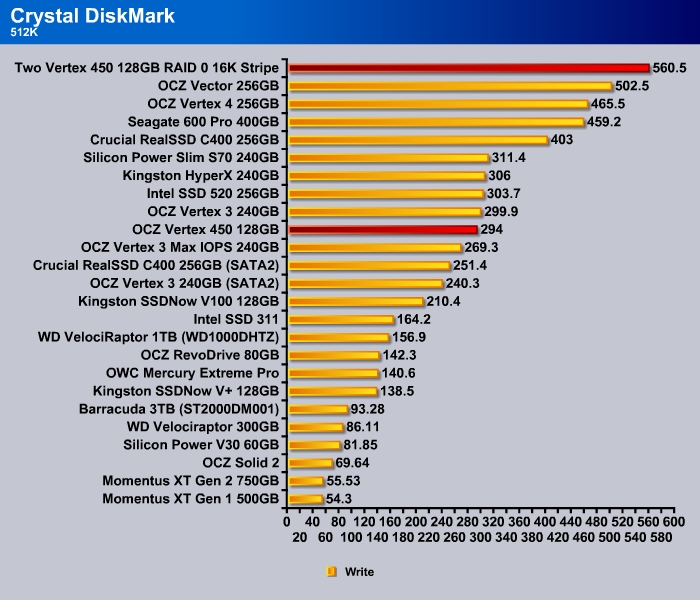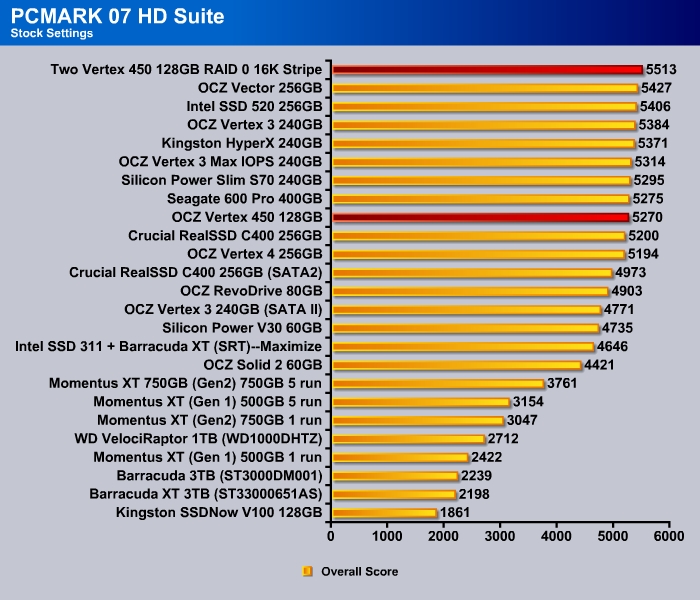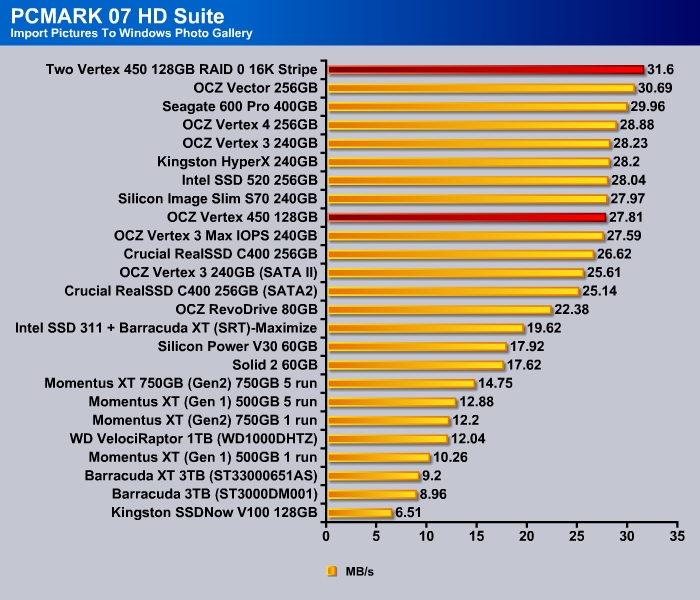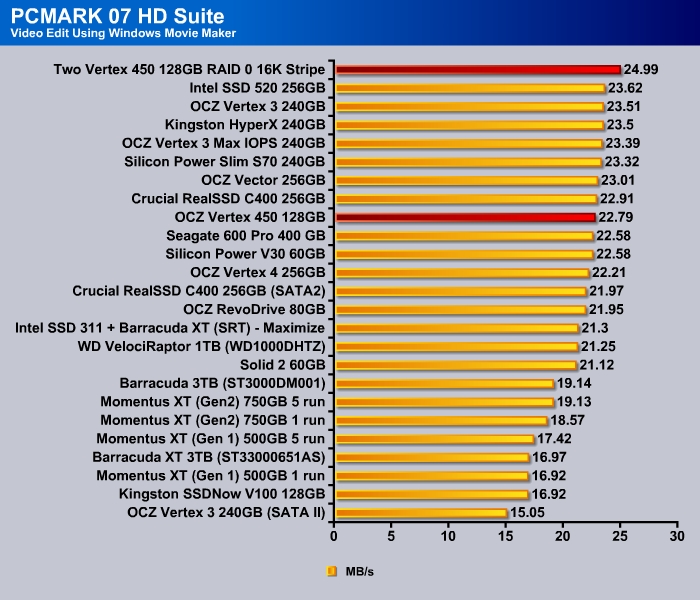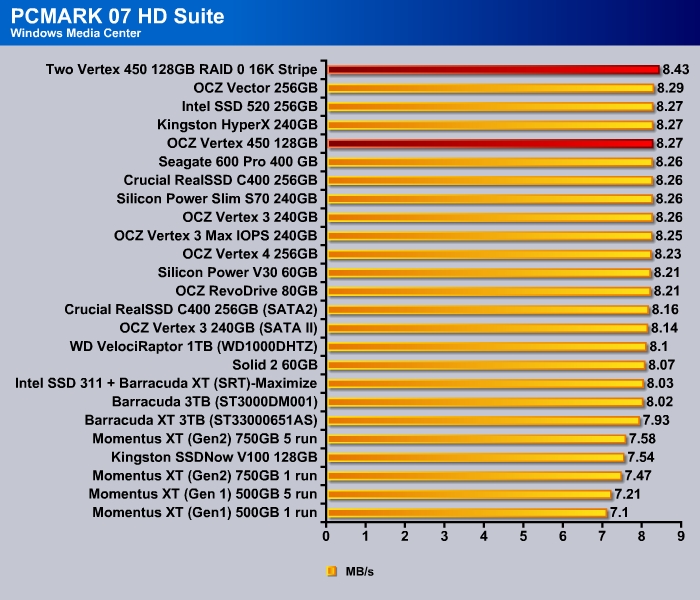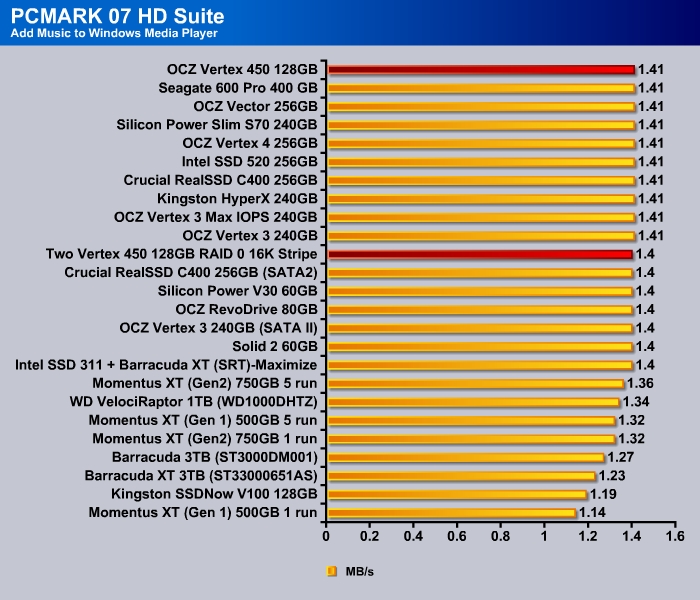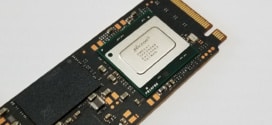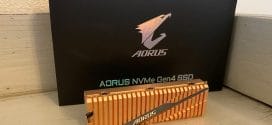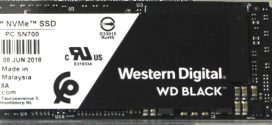Testing Setup
| Test Setup | |
| Case Type | None |
| CPU | Intel Core i5 2500K |
| Motherboard | Asus P8Z68-V Pro |
| Ram | Kingston HyperX 1600 |
| CPU Cooler | Prolimatech Megahalem |
| Storage Drives |
|
| Optical | None |
| GPU | PNY GTX 670 |
| Case Fans | 120mm Fan cooling the mosfet CPU area |
| Docking Stations | None |
| Testing PSU | Cooler Master UCP 900W |
| Legacy | None |
| Mouse | Microsoft Intellimouse |
| Keyboard | Logitech Keyboard |
| Gaming Ear Buds | None |
| Speakers | None |
We include the result of RAID 0 with stripe size 16KB as that is the default setting for the Intel chipset.
Results
IOMETER
Let’s start with the random read performance. The 128GB Vertex 450 performs decent at queue depth of 1 but as we crank up the queue depth, it falls behind some of the current generation of 256GB drives. RAID 0 does not help much here since the drive is already fast enough and at such low queue depth, you will not benefit much from the second drive.
Desktop workloads will never stress more than a few queue depth but we present the 32 queue depth here to show the performance improvement with RAID 0. As you can see, despite the fact that RAID 0 does not help with the low queue depth performance, it has a major impact at queue depth of 32 where it is able to deliver 50% improvement. None of the single drive can even match the performance of the two drives in RAID.
Having less die per NAND on the 128GB drive lowers its random write performance and as a result it is not able to really compete against the drives with larger storage. RAID 0 helps out a little where we can see that the two drive in RAID 0 yields 50% improvement with queue depth of 1 and four times of the performance with queue depth of 3. It is still unable, however, to match the drives with maximum numbers of NAND channels.
At higher queue depth, we can see that the 240GB drive still yields better performance compare to the two drives in RAID.
The sequential read of the Vertex 450 is on par with the 256GB Vertex 4. One of the biggest improvement that users would be able to notice with RAID 0 of two SSDs would be the sequential read performance where it takes the lead over single drive.
Sequential write unfortunately suffered again due to the reduced NAND dies.
AS SSD
When comes to reading incompressible data, the Vertex 4 is not as fast as some of the current generation 256GB drive but it is faster than many of the SSDs couple of years ago.
Similarly, the 4K random write of incompressible data is slower than current crops of SSDs but it is faster than the many of the older drives on the market.
Notice that RAID 0 does not help the performance in the random read and write. In fact, the performance actually took a little bit of hit. RAID 0 really will not help much performance at queue depth 1.
However, we can see the performance improvement as the number of threads increased.
With the AS SSD, we see the sequential write for the two drives in RAID actually offers almost double of the bandwidth compare to the single 128GB drive. If you are dealing with a lot read and write of incompressible data, then having two SSDs in RAID as oppose to a single faster drive could yield a very good performance improvement.
Crystal DiskMark
The random read and write performance of the Vertex 450 is respectable for a 128GB drive where we can see that it is faster than the Kingston SSDNow V+ and V100. RAID does not help much when comes to small file read and write and thus, while there is small improvement compare to the single drive, the performance is still lagging behind the latest 256GB drives.
Higher queue depth again favors the RAID 0 configuration
The 512K transfer benefited with RAID 0 configuration.
The sequential read of the 120GB drive in CrystalMark is decent but the write lags behind the 240GB drive but it is worth noting that it is actually able to perform close to the 240GB Vertex 3. In RAID 0 configuration, we see a significant performance gain that is almost double of what we get from a single drive.
PCMark7
We turn to PCMark 07’s HD suite to assess the drive’s general usage performance. Here we can see that the Vertex 450 is still fast enough compare to other drives. It once again beats out many older 240GB drives from a couple of years ago. With two drives in RAID, it takes the top spot and offers about 5% improvement.
When we look at the individual tasks, we can see two drives in RAID 0 excels in benchmarks such as Importing Picture, Application Load, and Video Editing.
Review Overview
Perforamnce - 8
Value - 9
Quality - 8.5
Features - 8.3
Innovation - 8.5
8.5
OCZ Vertex 450 128GB RAID 0
The OCZ Vertex 128GB offers good price and performance ratio. It is a good drive for those who are looking to replace their aging SSD or HDD.
 Bjorn3D.com Bjorn3d.com – Satisfying Your Daily Tech Cravings Since 1996
Bjorn3D.com Bjorn3d.com – Satisfying Your Daily Tech Cravings Since 1996
